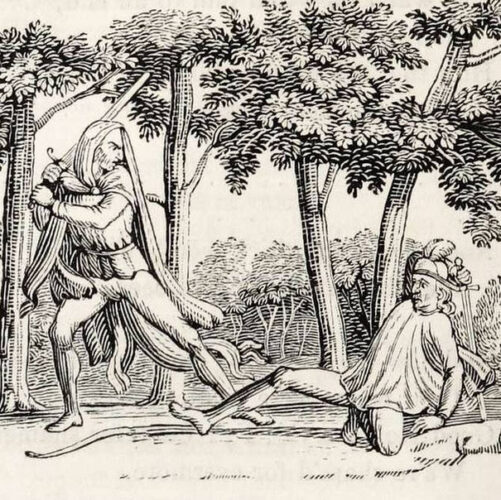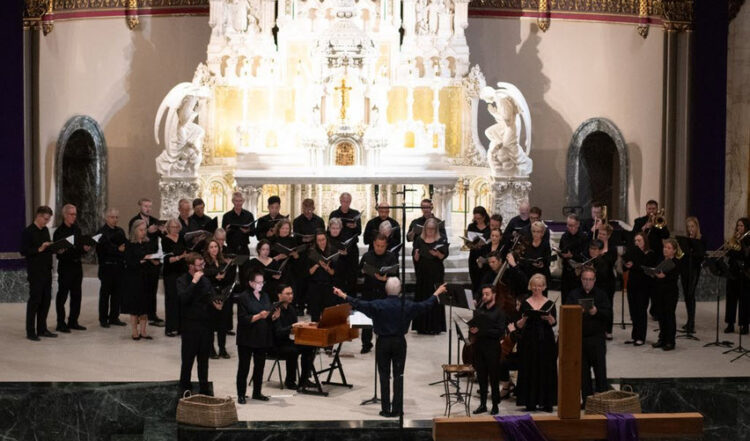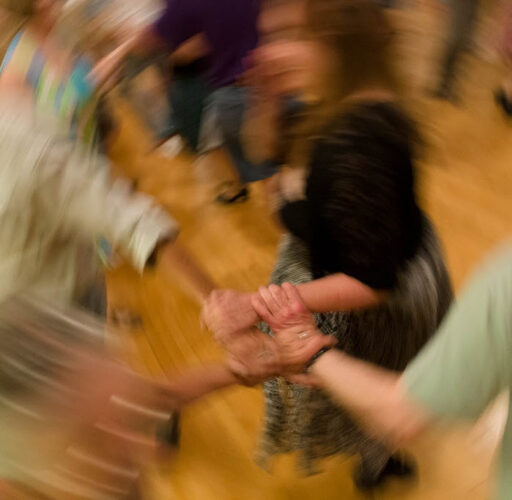by Alyssa Campbell
Published February 12, 2024
Editor’s note: The Fooles were among the extraordinary performers at the 2023 EMA Summit.
EMA’s Emerging Artists Showcase is an invaluable platform for connecting early music’s rising stars with new audiences and presenters. The author of this essay, violinist Alyssa Campbell, is continuing her advanced studies with help from an EMA scholarship. Together we can help early music flourish. Join EMA today.
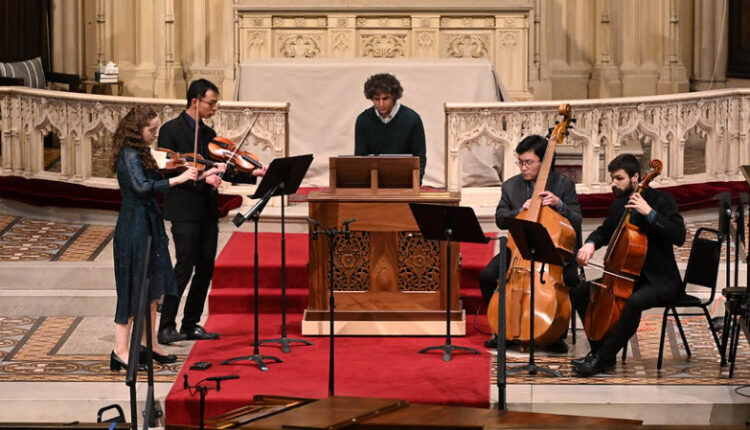
‘We decide to make tuning our instruments, which is often long and disruptive, into a coherent part of the performance’
Invited to perform on EMA’s Emerging Artists Showcase in October, The Fooles chose several sonatas by 17th-century Italian composer Dario Castello. These were complemented by both improvised and written-out preludes and ricercars. The Fooles — Ryan Cheng and I on Baroque violin, Andrew Koutroubas on Baroque cello, John Stajduhar on violone, and Nicola Canzano on chamber organ — is an ensemble specializing in music from the early-modern period. Castello’s groundbreaking and, at times, truly shocking music plays an important part in our understanding of instrumental music from this era.
Castello worked in Venice, a city that famously flourished in trade, music, and the arts. We were very mindful of the cultural and physical environment for which the music was composed when developing our “sound.” While Castello is very much old music to today’s audiences, at its premiere it was a new and exhilarating departure from the familiar old style, and we hoped to bring to the Showcase stage this freshness and excitement. Castello himself referred to this when the sonatas were published, titling them Sonate Concertate in Stil Moderno Libro II, or Sonatas in the Modern Style. As such, we aimed to represent the forward thinking of 17th-century Venice in our 21st-century performance. To accomplish this, we experimented with many aspects of our playing.
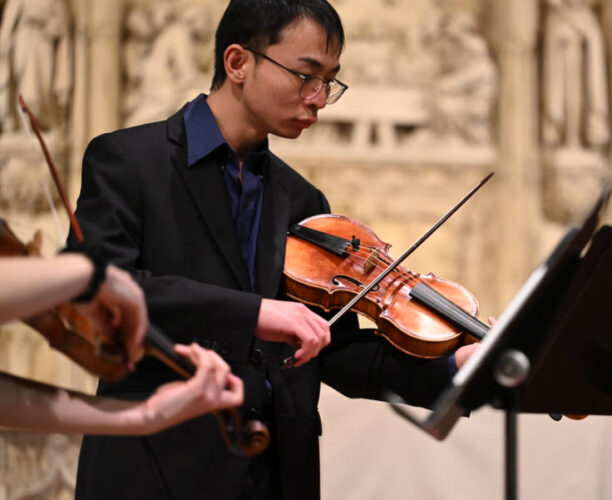
The posture of how we held our violins had a drastic influence on the sound. We know from various treatises and iconography that while there were conflicting ways to hold the violin during the 17th century, one of the most common was to hold it on the chest, with the neck of the instrument resting on the left wrist and the chin completely free.
To play in this way is a sharp departure from “proper” modern violin technique. The positioning of the fingers and the bow requires re-training the left hand for intonation and ease, and harnessing the increased strength of the bow when the instrument is at a lower center of gravity. It’s different for everyone, but often this process can feel like learning an entirely new instrument! We really enjoyed this, and found that many of our decisions relating to interpretation were influenced by what is natural when playing in this manner.
When tuning our instruments (A415 in ¼ comma meantone), we decided to make this process, which is often long and disruptive, into a coherent part of the performance. Our continuo player, Nicola Canzano, improvised preludes on the chamber organ to connect the different sonatas, during which the string players tuned quietly, either at the tip of the bow with short strokes, or by quietly plucking the strings.
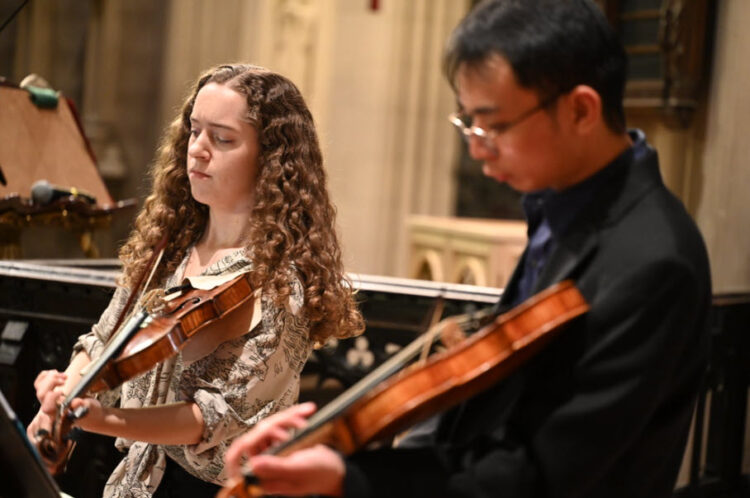
The desired effect was that there was very little performance time given up for the tuning of instruments. The sound on stage was almost never interrupted. This comes from the historical practice of “preluding,” which can be used to center oneself in a key before beginning a piece, or to tune instruments. We spent a good portion of our rehearsal time actually practicing this. It was important that we learned to hear which chords and progressions would help us in tuning the strings, and that we could do it as quickly as possible.
You’ve got to rehearse!
Whenever possible, we performed this music from the original editions. Castello’s sonatas were published in 1629 in Venice, which was home to some of the best and most advanced publishing houses of the day. As a result, the parts have things like dynamics, slurs, and an occasional bar line that were previously difficult to include in music. The original parts can be very different from the modern notation system when first reading it, and require a different rehearsal strategy.
This impact on rehearsal was especially interesting for us. In the foreword to Sonate Concertate in Stil Moderno Libro I, Castello himself suggests that musicians practice this music, as it will make sonatas in this new style easier and more enjoyable to play. (The Academy of Ancient Music’s William Carter, in liner notes to their Castello CD, quotes the composer: “…although at first sight they may appear difficult, their spirit will not be destroyed by playing them more than once, and in so doing they will become practised and this will render them very easy, since nothing is difficult when pleasure is derived.”)
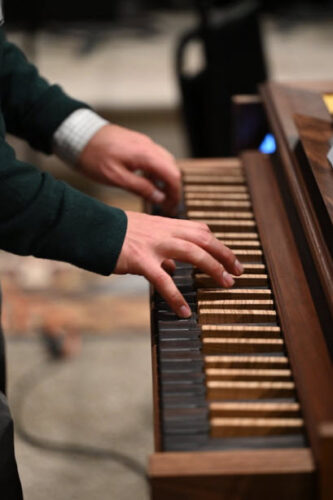
These editions also come without a score or measure numbers, which are traditionally used as an efficient way to rehearse music. This meant that in addition to everyone needing to learn to read the old notation system, each member of The Fooles had to be confident and responsible for their own part. When one part gets lost, instead of calling out a specific measure, you have to either start again from the beginning or the nearest easily recognizable section!
Rehearsing in this way forced us to better understand the structure of the piece and develop a language for describing exactly where in the music we meant.
Castello’s first editions also come with many printed mistakes (often corrected in modern parts) so each of us had to keep an ear out for these errors ourselves. While this rehearsal process was initially more tedious — we were all learning and adapting with each measure — by the end, every member of the group was more intimately familiar with the music. It became a really personal and rewarding experience.
Alyssa Campbell is a Baroque violinist and violist based in New York City. She is a founder of The Fooles, and is currently studying 17th-century music in The Hague, Netherlands as a recipient of EMA’s 2023 Margriet Tindemans Scholarship.

